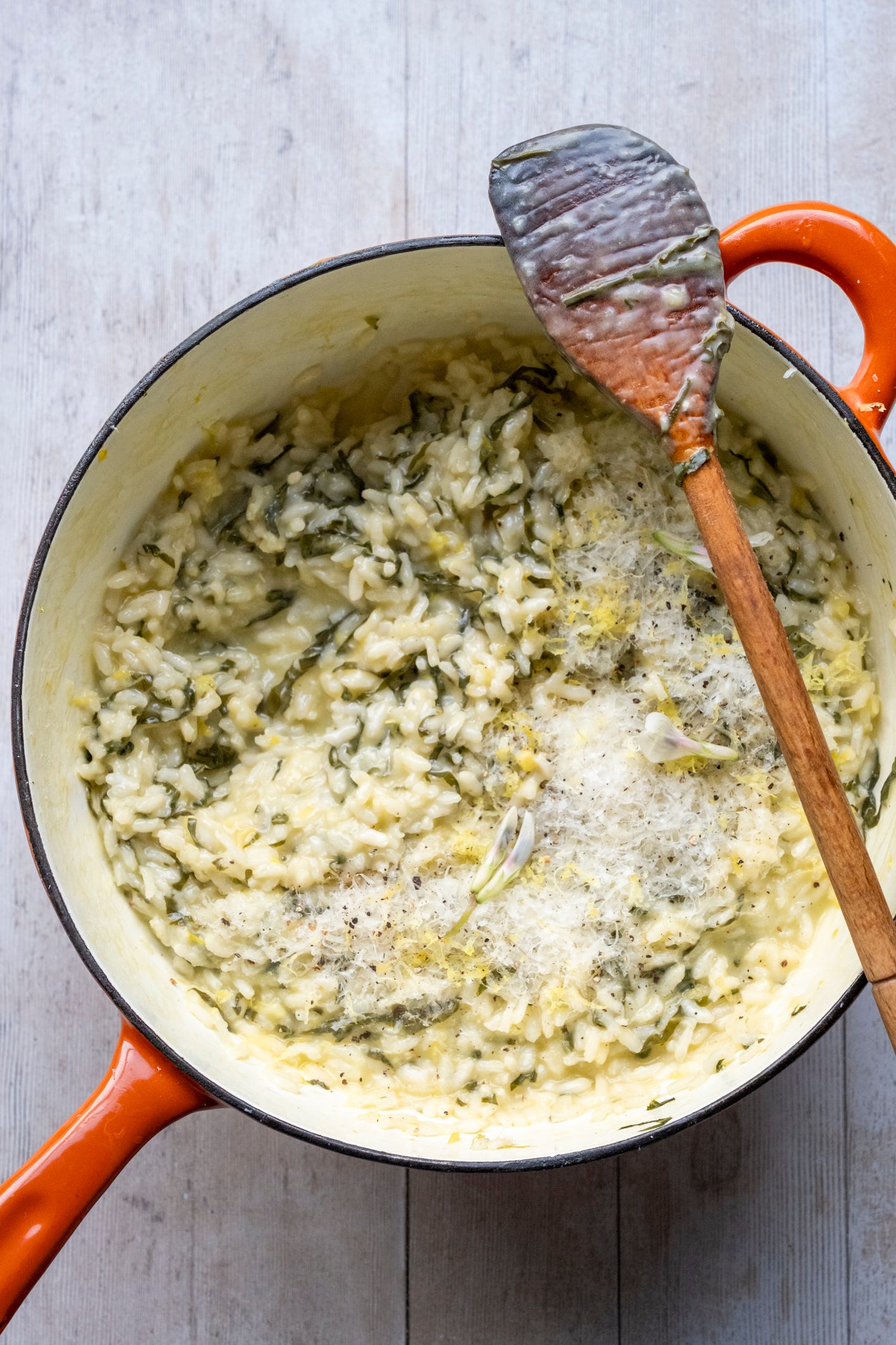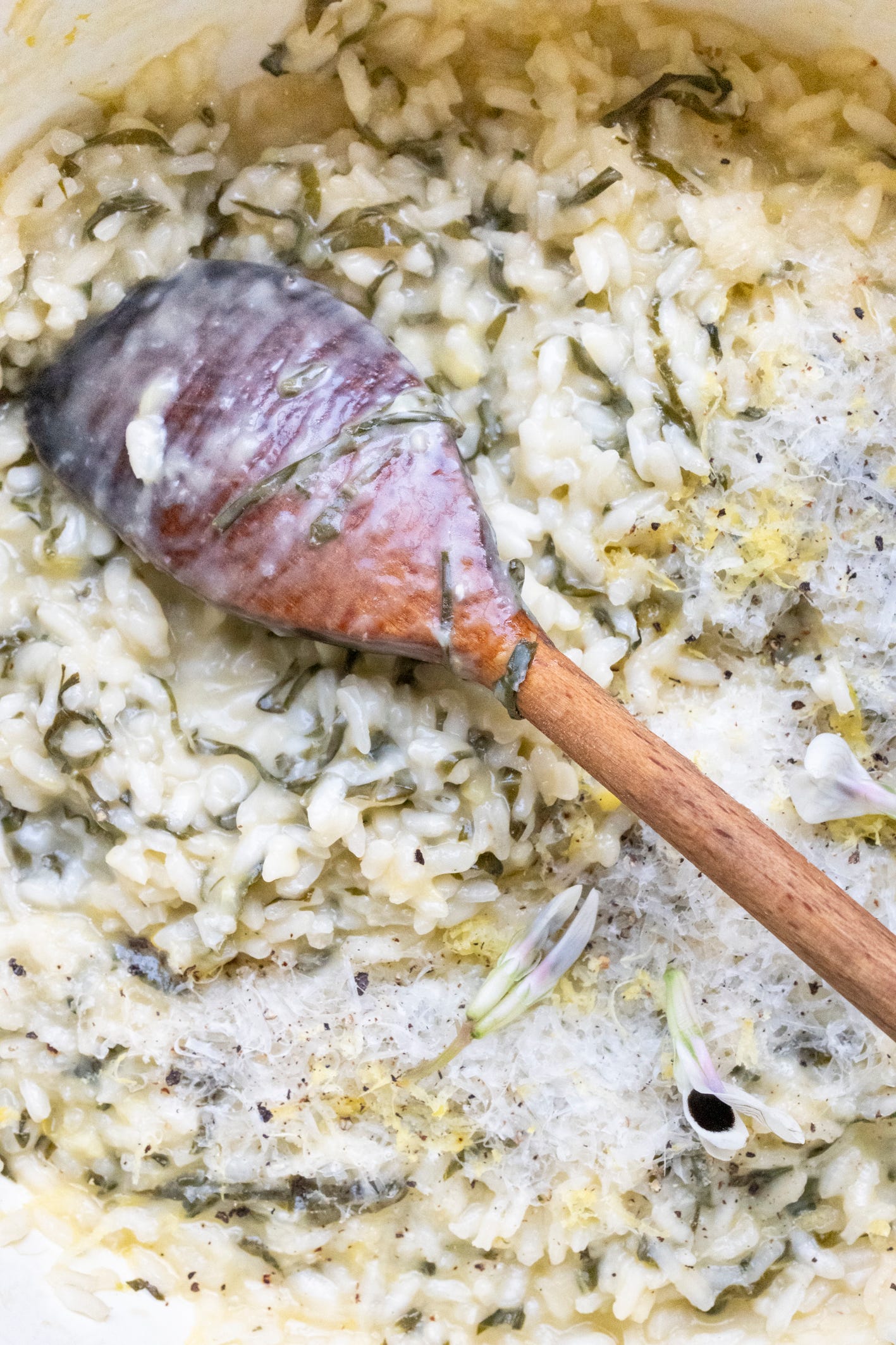Broad bean leaves, excellent risotto, Ronaldinho and Pepsi
Abundance: Tues 21 May 2024
Twenty years ago, when the world seemed less bananas, I took a familiar favourite route through Worth Matravers1 towards the coast and the almost perfect circle of Chapman’s Pool. Somewhere between the two, the path crossed the only field of broad beans in flower I’ve ever seen.
The sun, unusually hot and hard so early, lifted their scent into the air. It was a perfect moment. Everything made sense. If I hadn’t been so regrettably English, I might’ve laid down on the soil and lost myself to it completely. Instead, I knelt, pushed my face close to their everyday, remarkable blossom, and took in all I could.
Every May, when it is still and the morning shifting sharply from chilly to hot, I kneel by the few plants in the garden and get a glimpse of that morning, as sure as a sip of Lucozade transports me to the poor timing of being half term ill.
It’s too early for beans - the flowers will eventually develop into those lolloping pods - but even if this was it, even if the pods didn’t materialise, I’d grow broad beans. Partly for this scent, but as much for the leaves - every bit the beans equal - which almost no-one eats.
Pluck a soft side branch downwards and it’ll shear pleasingly from the stem; taste a young leaf and you’ll find it a perfect, fresh, halfway house between broad beans and fresh peas. Just as they are, early and succulent, they’re one of the very best salad leaves. Why more of us don’t routinely pick a modest crop of them to enjoy before the beans arrive, I have no idea.
I rarely sow broad beans in early winter in the hope of gaining a few weeks on a spring sown harvest, but it is one of the markers of my wife’s garden year; however inclement, she’ll find an ok day 6 weeks or so before Christmas to push Aquadulce2 seeds knuckle deep into the soil, in hope rather than expectation that molluscs will sidestep them.
This morning’s scent reminds me to sow a late spring batch that will hopefully give me late beans, but most certainly provide summer leaves. Bunyard’s Exhibition and a crimson flowered variety like Grando Violetto are what I turn to in spring, starting them off in toilet roll inners or root trainers to allow them the long root run they favour.
As the flowers wilt, I snip off the top growth of each stem. This directs the plants energies to the developing beans, it removes aphids’ favourite place to proliferate, and stir fried or shredded into a leafy salad, they are a joy to eat.
This pretty much sums up the pleasure of tending a little patch of the planet: you think you are doing it for one reason, and you haven’t the faintest idea of the breadth of reward coming your way.
Broad bean leaf and lemon risotto
I had pretty much given up on risotto3 until an accidental day in Raymond Blanc’s company - a story for another time. Now, as with Pepsi and Mr Blue Sky, risotto is a pleasure I desire a few times a year, when I will dedicate myself to its excellence.
Risotto is, like soup, so easy to consign to carelessness - a repository for slack vegetables and halfhearted attention. Constant, mindful stirring in the early stages, excellent stock, allowing the liquid to be incorporated before adding the next ladleful, the resting, and deploying parmesan in two increments make all the difference between slurry and satisfaction.
Risotto should move when you tip the bowl; add a little more stock or water late on if needed.
Serves 4
350g risotto rice
1.2 litre vegetable stock, hot
175ml dry white wine/cider
80g butter
1 tbsp olive oil
1 shallot, very finely diced
2 sticks celery, very finely diced
12 broad bean branches, leaves only, finely shredded
80g parmesan, grated
1 stick of lemongrass
Zest of 1 lemon
½ lemon, pith and pips removed and discarded, flesh thinly sliced
Salt and pepper
Add 20g butter and the olive oil to a large, heavy-bottomed saucepan over a moderate heat. Add the onion and celery and cook for 10 minutes until soft and translucent. Stir in the rice and ½ tsp of salt, turning the heat up slightly and stirring for a minute to toast and coat the grains. Add the wine/cider and the lemongrass and cook while stirring until all the liquid has evaporated.
Reduce the heat to moderate and add the first ladleful of stock. Stir continuously until all the liquid has evaporated. Repeat with another ladleful of stock, stirring until evaporated. Continue to add a ladleful at a time, stirring constantly, until all of the stock is used.
After 10 minutes cooking, stir in the broad bean leaves and the lemon slices.
Check the rice after another 5 minutes; you want the grains to be tender but with a little bite. When the rice is ready, remove from the heat, and beat in the remaining butter and half the parmesan. Check the seasoning, cover and allow it to rest for 2 minutes.
Serve topped with the remaining parmesan, the lemon zest and a few broad bean flowers if you have them.
https://maps.app.goo.gl/ZMVC7JPZ1zAksdA3A
The best for early sowing
I mostly prefer more textural variation









I have two broad bean rituals. The first, like your wife, is planting broad beans before Christmas. The second is weeping over their mangled, nibbled, weather-trampled corpses in early spring and starting all over again...
Nice one, Mark. Never used the leaves, but always the young pods, unshelled, chopped to f as they do in Andaluz, slow-cooked in a closed pot with dry sherry, olive oil, garlic. a handful of serrano ham scraps from close to the bone, and maybe marjoram, or parsley - or not. Serve soupy as a main course, maybe with a quartered hard-boiled egg.